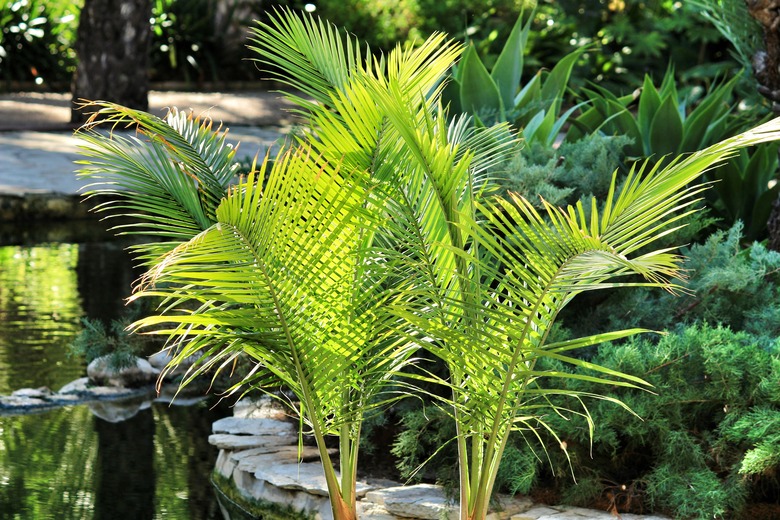How To Prune A Majesty Palm
We may receive a commission on purchases made from links.
Majesty palms (Ravenea rivularis, USDA zones 10 to 11) add an instant tropical feeling to any location whether they're used indoors or planted outside in the landscape. As with all types of palms, it's important to follow proper pruning techniques to provide the tree with the best possible health. Improper majesty palm pruning leads to potential problems with pests and disease and can shorten the life of the tree. By following basic palm pruning tips, you'll keep your majesty palm producing healthy growth for years to come.
Notable Characteristics of Majesty Palms
Notable Characteristics of Majesty Palms
Native to Madagascar where they're considered endangered, majesty palms are popular houseplants and outdoor specimens in constantly warm locales. There are two types of palm trees classified by their frond shapes of fan or feather, with majesty palms having feathery, evergreen fronds.
Mature majesty palms grow to around 60 feet tall with a 10- to 15-foot canopy filled with flowing, feathery fronds. The palm grows relatively quickly, producing around 2 feet of new growth annually when grown in preferred conditions. Trees produce a single grayish-brown trunk that has a swollen middle. The smooth bark is lined with ringed leaf scars, adding to the palm's appeal.
Majesty palms bloom periodically throughout the year, producing long, meaty panicles of white flowers that are quite showy against the green fronds. The spent blooms turn into clusters of tiny red fruits that add to the palm's attractive allure. However, when grown indoors, the palm rarely blooms.
Pruning Tips for Good Health
Pruning Tips for Good Health
Properly pruning your majesty palm is important to keep your tree healthy and to produce problem-free growth. Majesty palms are self-cleaning, meaning each frond has a crownshaft that falls away from the trunk once the frond completely dies. It's easy to distinguish the frond's crownshaft, as it's the smooth green portion at the bottom of the frond attached to the tree's trunk. It can take months for the frond and crownshaft to completely die and fall. It starts as green and slowly changes to orange-brown, and once it's completely dead, it browns and is discarded from the trunk.
Overpruning a palm tree can create a weak and unhealthy tree that doesn't stand up to cold well and is more likely to have the trimmed canopy snap in extremely windy conditions, like hurricanes or tropical storms. Palms, including majesty palms, are still gaining necessary nutrients from fronds that still only contain a bit of green. Unless the frond is broken, causing interference with a structure, or completely dead, you should let it remain on the majesty palm until it falls naturally or completely dies.
Tips for Majesty Palm Pruning
Tips for Majesty Palm Pruning
Regardless of whether the palm grows indoors or outdoors, and although you should wait until your majesty palm's fronds turn completely brown and die before removing them, you can safely cut off any flower or seed stalks at any time without harming the tree. If you don't want the mess of dropped fruit once it ripens, you can use clean loppers or a pruning saw and remove the flower or seed stalk from the palm. Cut it off close to the trunk without cutting into the trunk, which can open up the tree to health problems.
If you don't have the patience to wait for the majesty palm to naturally release the dead frond, you can manually remove it once it's completely dead. It's important to use clean pruning tools so you don't accidentally transfer a pest or disease to the palm, which is as easy as wiping off the blades with alcohol or bleach. Use a pruning saw or loppers to cut through the crownshaft close to the trunk to release the frond from the palm.
